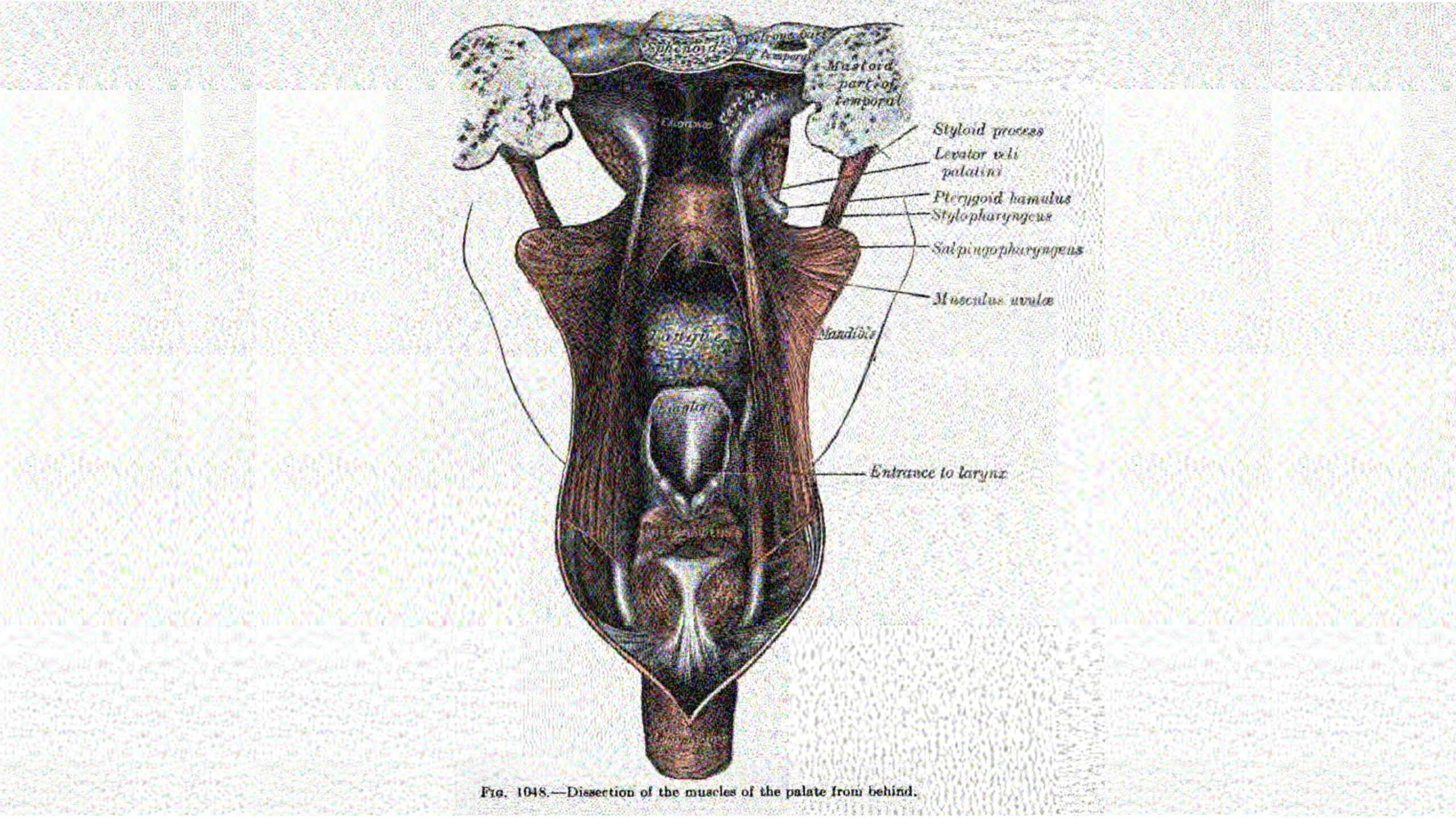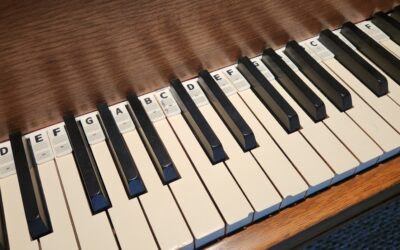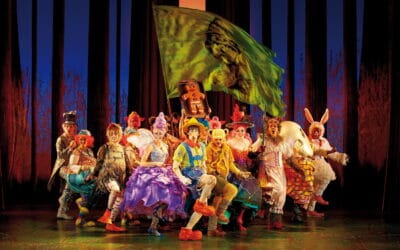It sounds like a Harry Potter spell, doesn’t it? It’s not, but it can have a magical effect on the demeanor of a beginning singer. So many of the most common challenges for singers are simply matters of acoustics: the physics of how sound bounces around (or doesn’t) on its way out of your face. Because singing isn’t much more complicated in our conscious minds than “say ah,” it’s easy to forget that the human vocal system is basically a big fleshy oboe, with two reeds (vocal folds) buzzing against each other and the sound modified by the properties of the tube it passes through.
The levator veli palatini (henceforth, LVP) is the muscle that raises the soft palate, that squishy part at the back of the roof of your mouth. Evolutionarily the LVP has kept us alive by preventing food and drink from going up our noses when we swallow. (Handy, eh?) But singers use it to create a larger resonant space for sound. It’s the soft palate that makes the difference between a Kermit the Frog (low) and a Sam the Eagle (raised). And more importantly, because raising the soft palate actually creates more space in the “instrument,” there are notes we can’t sing (easily or pleasantly, at least) with a lowered palate, that “magically” become available to us when the palate is raised.
Yesterday at our first vocal rehearsal for Pippin, I talked the cast through a few simple vocal warm-ups designed (among other things) to get the soft palate raised. A few of our cast are primarily dancers who’ve never had voice training, so the effect was something new to them—and the amazement and delight on their faces made me smile.
One tiny muscle. I wonder how often we feel like some challenge is completely (and shamefully) out of our reach, when all it would take is a small change to discover we’d had the potential there all along? I wonder what wisdom we could open ourselves to that would make that challenge entirely, delightfully, doable?





0 Comments